 Image 1 of 9
Image 1 of 9

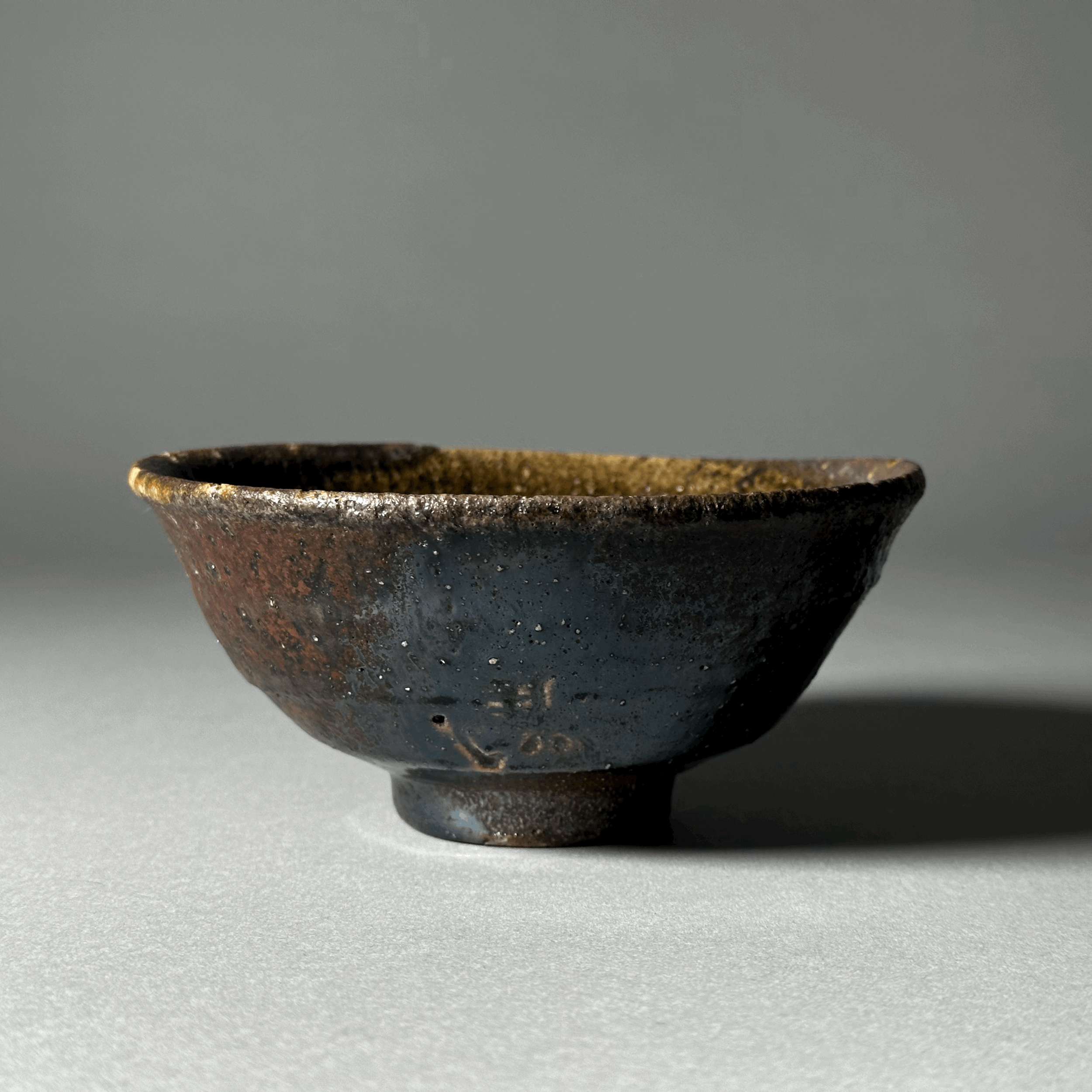 Image 2 of 9
Image 2 of 9

 Image 3 of 9
Image 3 of 9

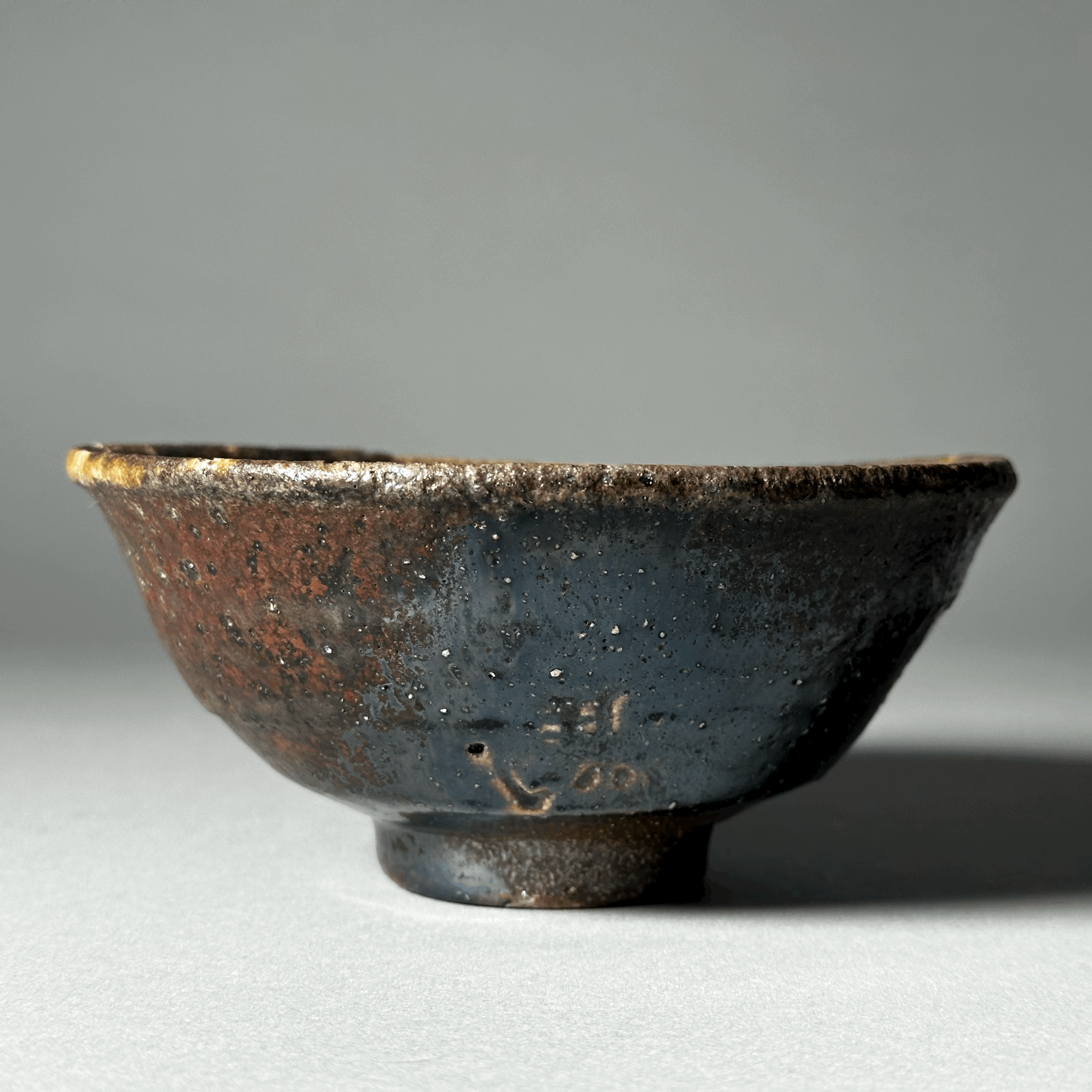 Image 4 of 9
Image 4 of 9

 Image 5 of 9
Image 5 of 9

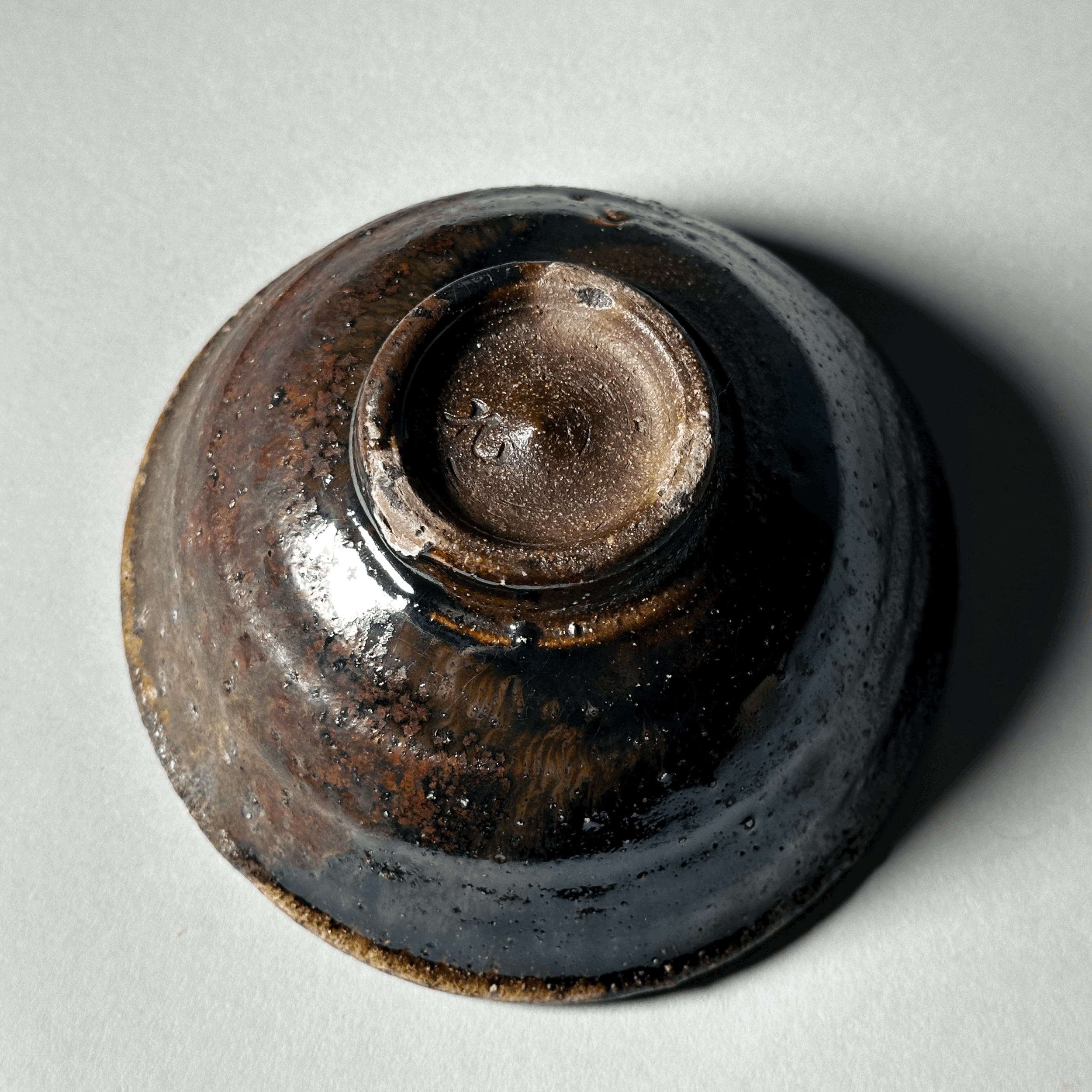 Image 6 of 9
Image 6 of 9

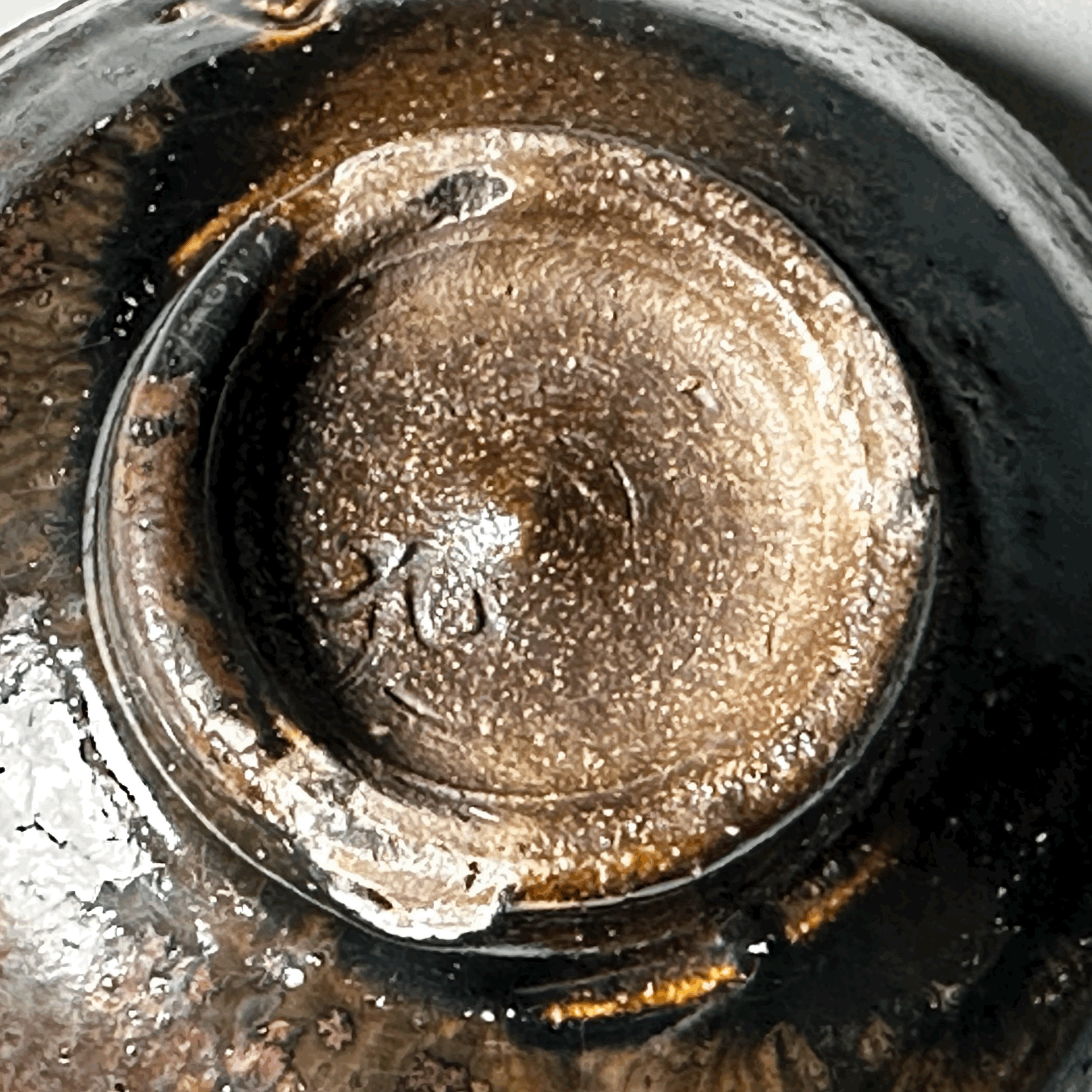 Image 7 of 9
Image 7 of 9

 Image 8 of 9
Image 8 of 9

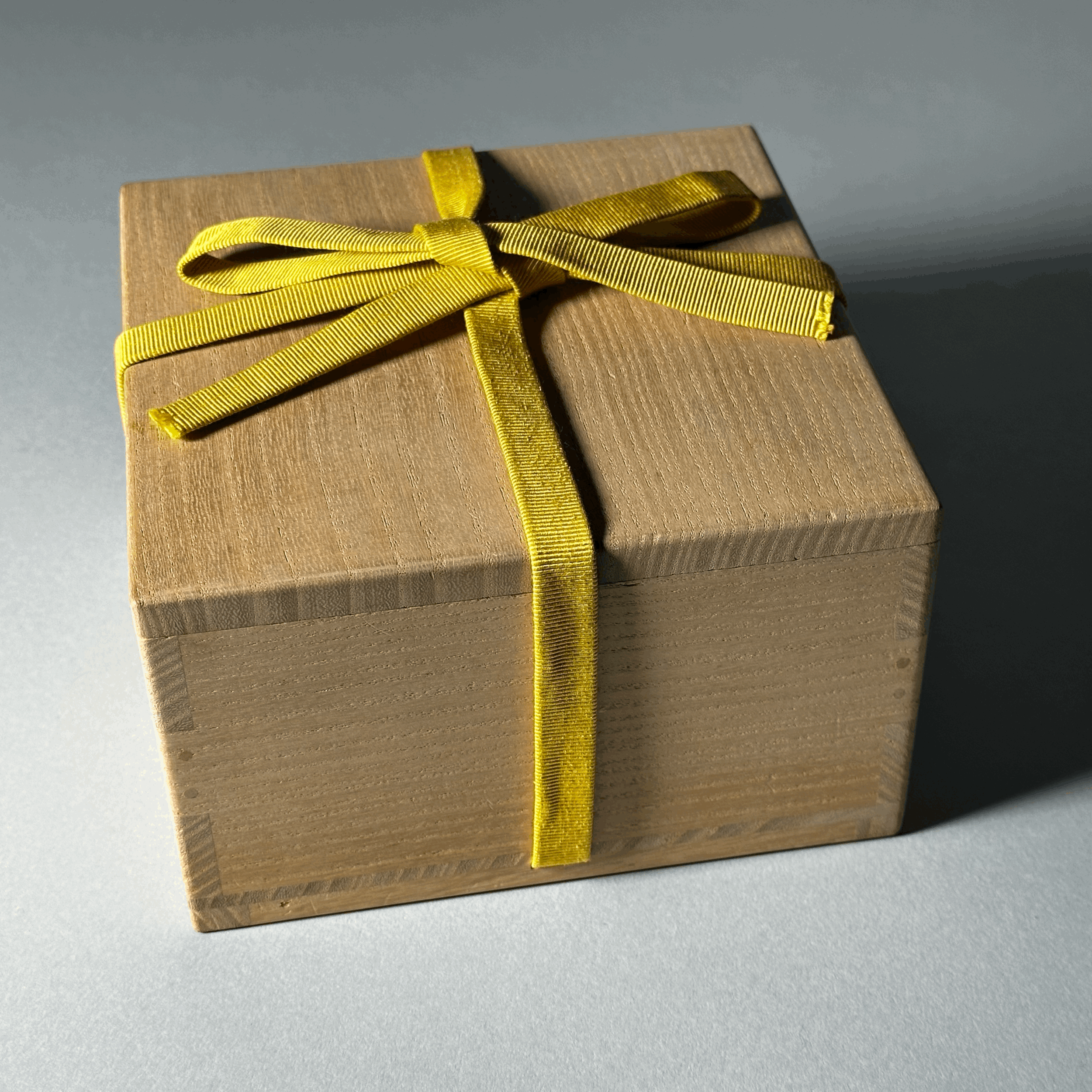 Image 9 of 9
Image 9 of 9










Echizen tea bowl by Mizuno Kyuemon (1921-1997)
Echizen, Japan
Showa period (1926-1989), c. 1987
Of shallow flaring form decorated with the kanji character for horse to the front partly covered in iron glaze, stamped signature to base. 6.5cm high 14.5cm diameter. Together with a modern Japanese wood box, the interior of the lid inscribed by Horiuchi Soshin (1919-2015), Horiuchi Sokan Kenchusai XII of the Horiuchi branch of the Omotesenke school of tea. Within the inscription he named the chawan ‘Yamamuro’, a name derived from Zen Buddhism meaning quiet mountain abode, implying stillness of the mind. Note: the horse character is sometimes applied to pieces which are fired in the first firing of a kiln, such ceramics known as hatsugama in Japanese.
Cat. 755
Mizuno Kyuemon (1921-1997)
Mizuno was a Japanese educator and pioneering ceramic scholar, widely regarded as the foremost authority on 古越前 (old Echizen) wares. Born in 1921 in Sabae, Fukui Prefecture, he began collecting Echizen pottery shards as a young man, eventually devoting over four decades to archaeological research, excavating ancient kiln sites, and reviving lost firing techniques. Working under the guidance of renowned scholar Fujio Koyama, he helped establish “越前焼” (Echizen-yaki) as one of Japan’s Six Ancient Kilns. Mizuno also reconstructed a Kamakura-era anagama kiln, conducted experimental firings (of which this chawan is from his first), and amassed a vast personal collection of artifacts, which now forms the core of the Fukui Prefectural Ceramic Collection.
Echizen, Japan
Showa period (1926-1989), c. 1987
Of shallow flaring form decorated with the kanji character for horse to the front partly covered in iron glaze, stamped signature to base. 6.5cm high 14.5cm diameter. Together with a modern Japanese wood box, the interior of the lid inscribed by Horiuchi Soshin (1919-2015), Horiuchi Sokan Kenchusai XII of the Horiuchi branch of the Omotesenke school of tea. Within the inscription he named the chawan ‘Yamamuro’, a name derived from Zen Buddhism meaning quiet mountain abode, implying stillness of the mind. Note: the horse character is sometimes applied to pieces which are fired in the first firing of a kiln, such ceramics known as hatsugama in Japanese.
Cat. 755
Mizuno Kyuemon (1921-1997)
Mizuno was a Japanese educator and pioneering ceramic scholar, widely regarded as the foremost authority on 古越前 (old Echizen) wares. Born in 1921 in Sabae, Fukui Prefecture, he began collecting Echizen pottery shards as a young man, eventually devoting over four decades to archaeological research, excavating ancient kiln sites, and reviving lost firing techniques. Working under the guidance of renowned scholar Fujio Koyama, he helped establish “越前焼” (Echizen-yaki) as one of Japan’s Six Ancient Kilns. Mizuno also reconstructed a Kamakura-era anagama kiln, conducted experimental firings (of which this chawan is from his first), and amassed a vast personal collection of artifacts, which now forms the core of the Fukui Prefectural Ceramic Collection.
